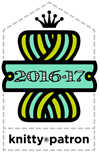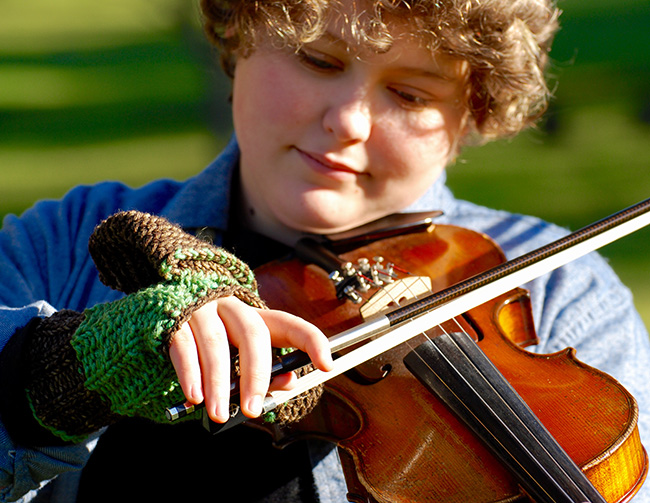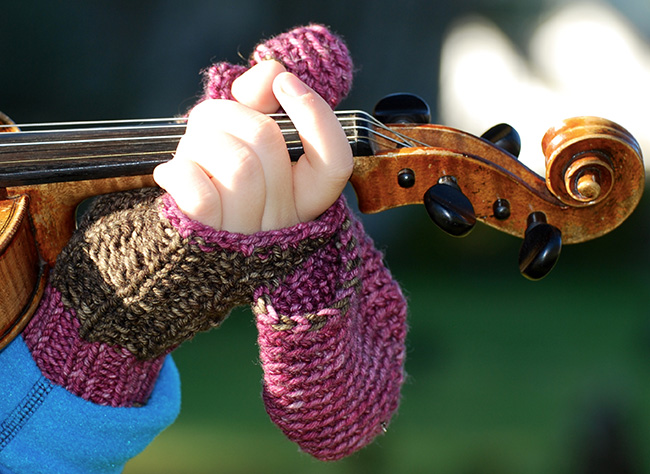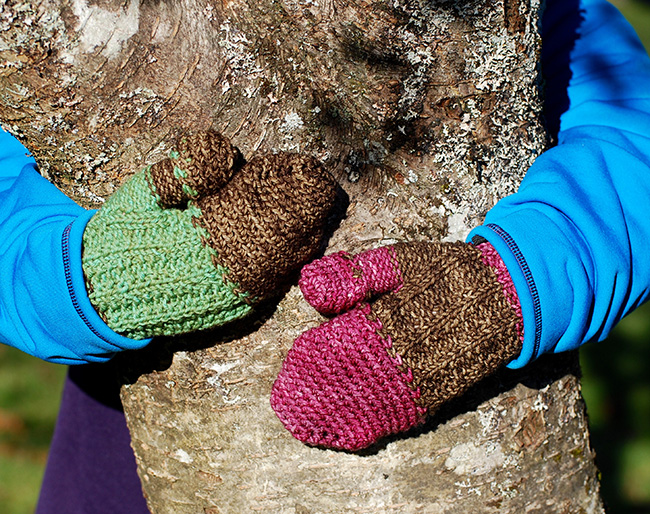Feature: PWT
PWT
Plays Well Together: Three Beginnings and an Ending
One of the reasons knitting and crochet play so well together is that one can pick up where the other leaves off—you can crochet a beginning and knit an ending. You can crochet into your knitting or knit into your crochet. A crochet hook is a great way to begin small rounds, and in “Fiddlers Three,” you get to try three different ways to do that. As a bonus, we’ll try a fun two-color edging in crochet; it’s an easy introduction to crochet color-work.
Crochet Chain Edging
Used for the cuff cast-on.
You may have used a crochet chain to create a provisional cast-on. This is a similar idea, except we’re using the chain as a design feature of the mitt—to tie it to the crochet at the top—so we won’t remove it.
Make a chain the specified length.
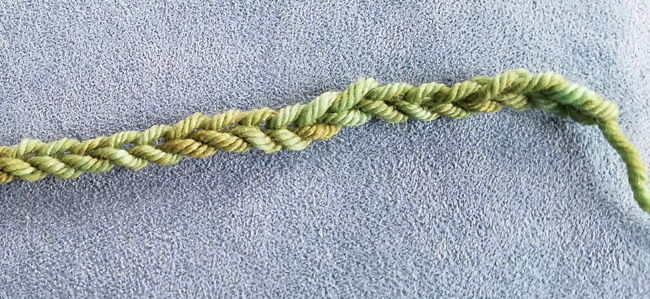
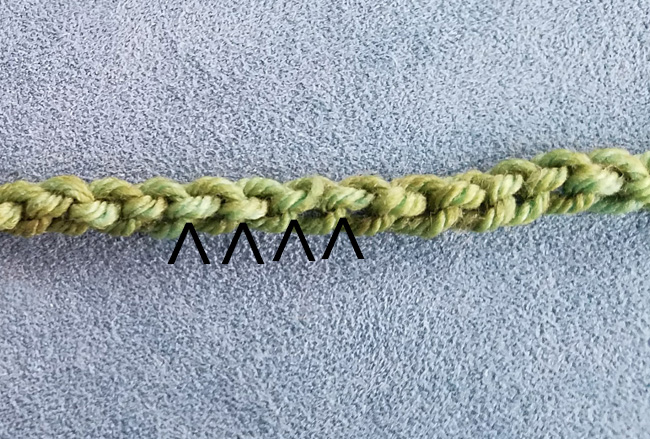
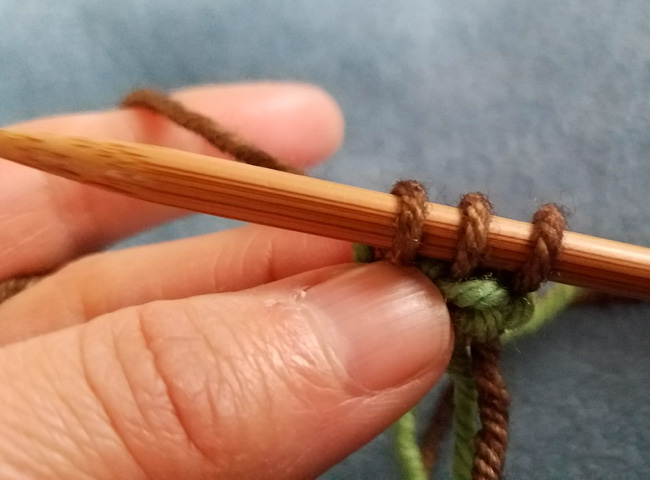
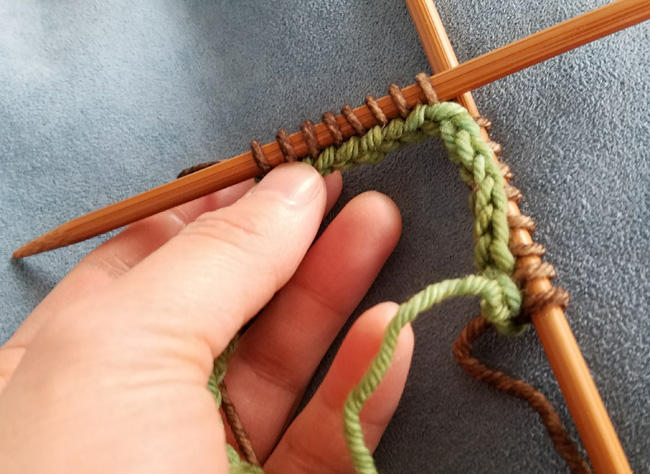

Begin knitting in the round.
As you secure your ends, us the end of the chain to connect to the beginning of the chain.
Oval in the Round
This technique is used to start the mitten cap. It would be equally useful for crocheting a whole mitten from the fingertips down, and it’s great for making a sock from the toe-up.
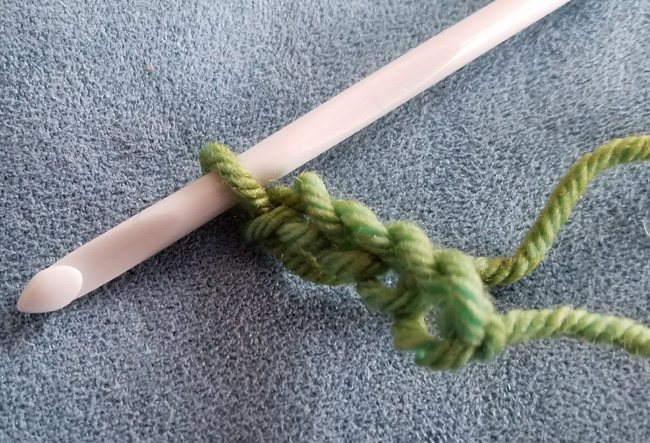
Make a chain the specified length.
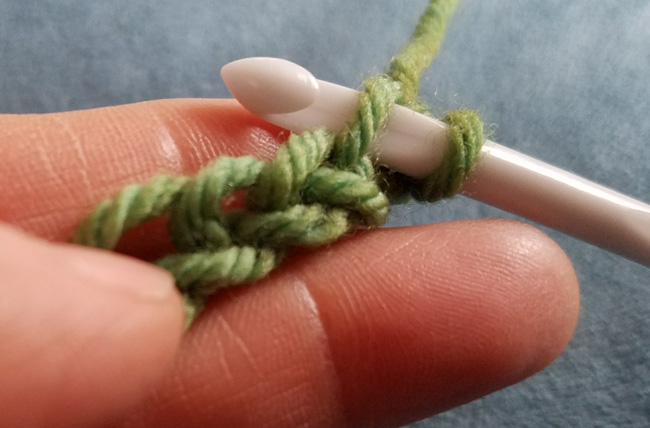
Single crochet, only into the top loop of the chain.
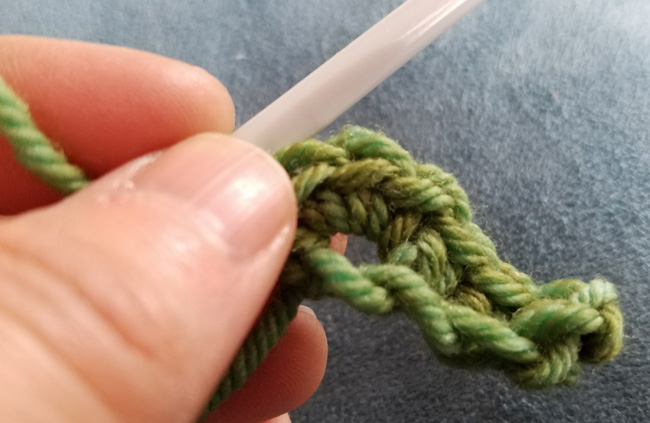
Single crochet across in each top loop, then work 3 single crochet into the top loop of the last chain.
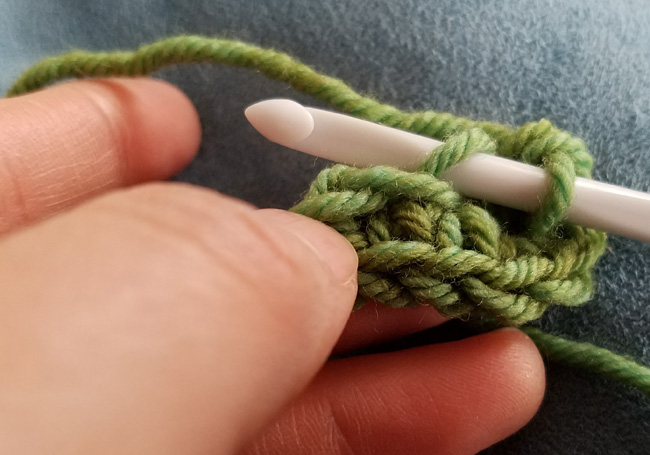
Turn the chain over, so you can crochet into the bottom loops of the chain.

Single crochet in each bottom loop across until the last loop.
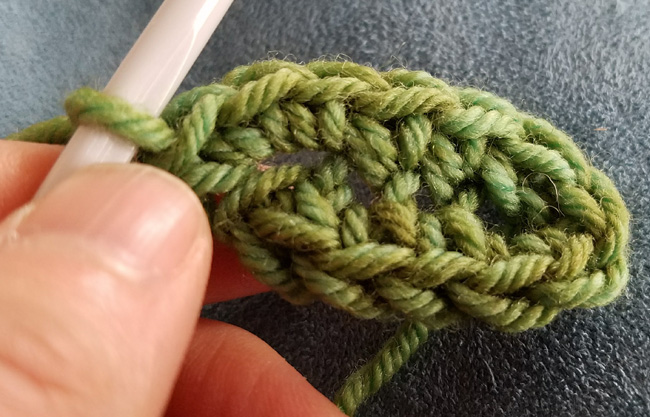
Work 3 single crochet into the last loop of the chain.
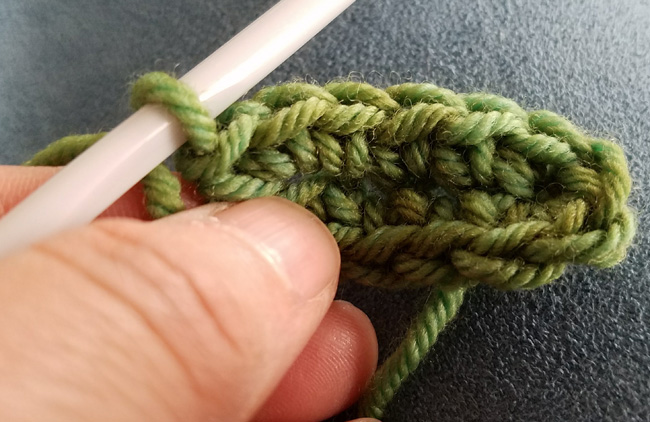
You can now continue to work in oval rounds, increasing as specified in your pattern.
Magic Loop
Used to start the thumb cap.
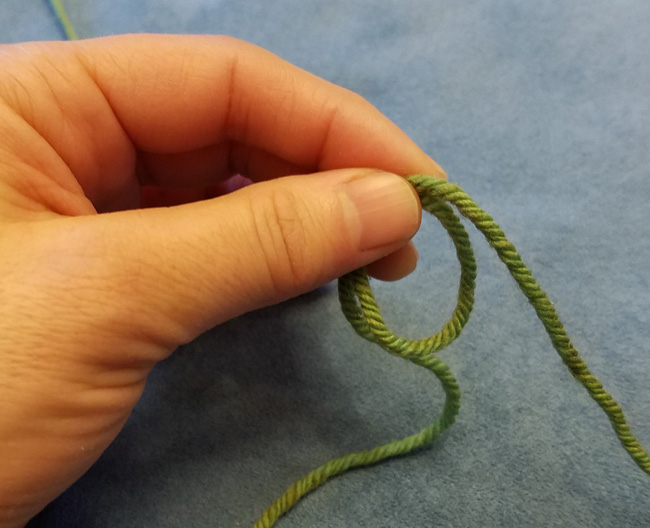
Make a loop of yarn, and let the tail hang to the right (or hook side of the loop).

Insert the hook into the loop, and make a slipstitch.
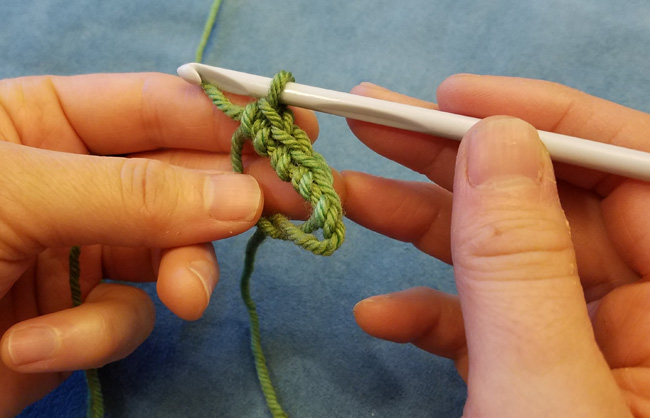
Work the required single crochet into the center of the loop.
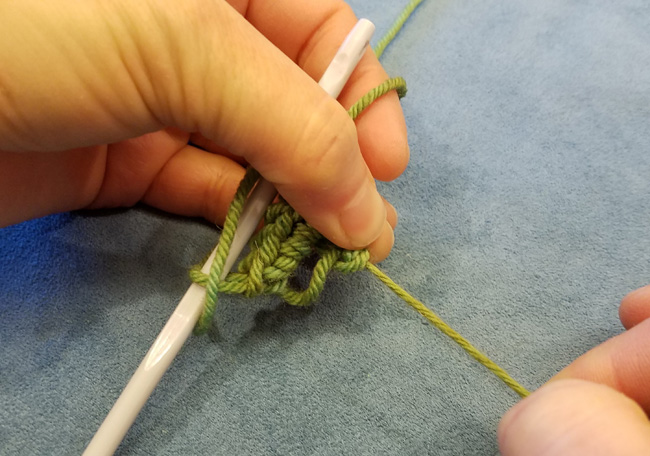
Use the tail to close the circle, and continue to crochet according to the instructions.
Two-Color Crochet Edging
You might not notice when you’re just working along in single crochet, but the final loop that you pull through in your stitch becomes the top of the following stitch. This means that if you want to change colors, and have the following stitch be completely in the new color, that final loop needs to get pulled through with the new color. We take this color changing trick and use it to make a pretty two-color edging for the mittens.
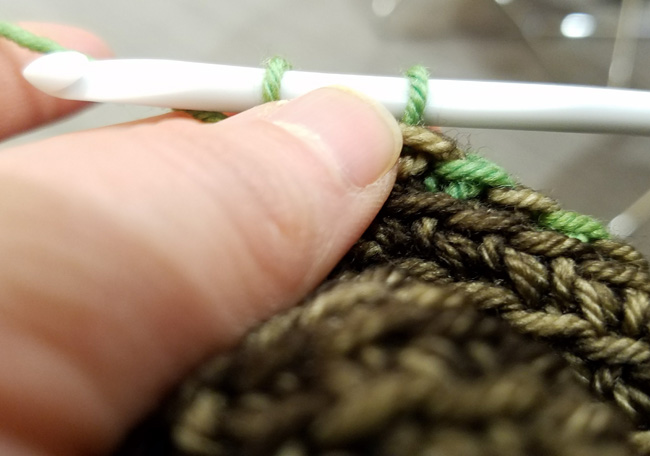
Step 1: With MC, Insert your hook into the next stitch, yarn over, pull up a loop, Pick up CC1, yo, pull through both loops.

Step 2: With CC1, insert hook in next stitch...
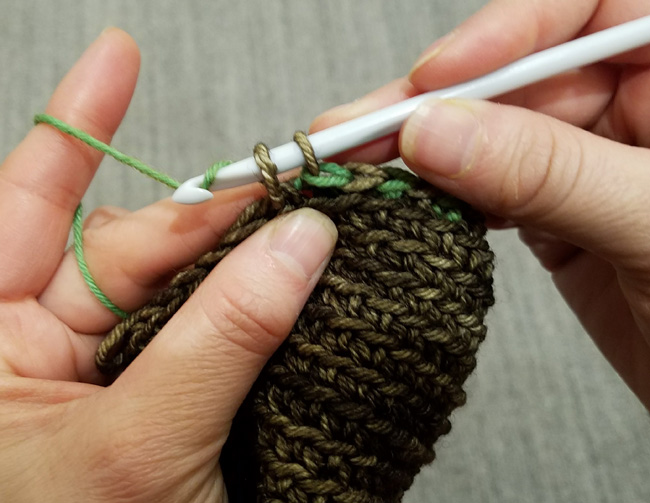
...yo, pull up a loop...
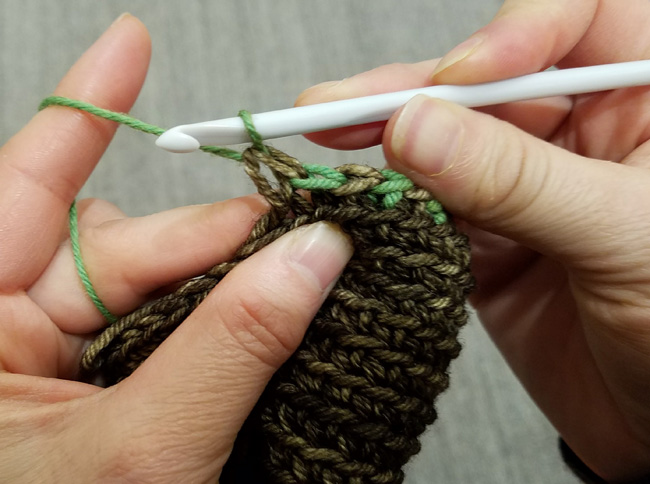
...pick up MC, yo, pull through both loops.
Repeat Steps 1 and 2 around. Be sure to slip stitch to join with the same color you used to begin.




